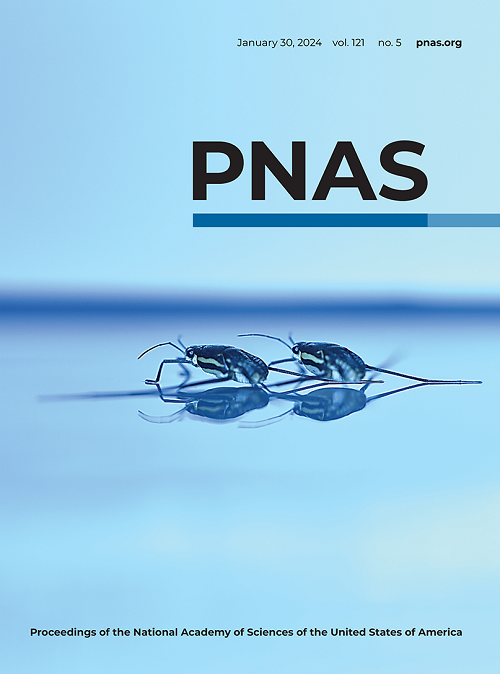No gender differences in attraction to young partners: A study of 4500 blind dates
IF 9.1
1区 综合性期刊
Q1 MULTIDISCIPLINARY SCIENCES
Proceedings of the National Academy of Sciences of the United States of America
Pub Date : 2025-01-27
DOI:10.1073/pnas.2416984122
引用次数: 0
Abstract
In mixed-gender couples, men are older than women on average. Scholars and laypeople presume that this arrangement reflects mirrored preferences such that men desire younger partners and women desire older partners. Nevertheless, relevant published data on in-person romantic evaluations—that is, studies where adults interact in person and report their initial attraction to each other—are nearly nonexistent. We examined the association of a partner’s age with romantic desire (对年轻伴侣的吸引力没有性别差异:对 4500 个相亲对象的研究
在男女混合的夫妻中,男性的平均年龄比女性大。学者和外行认为,这种安排反映了男性渴望年轻伴侣而女性渴望年长伴侣的镜像偏好。然而,关于面对面浪漫评估的相关出版数据——即成年人面对面互动并报告他们最初对彼此的吸引力的研究——几乎不存在。我们在6262名使用婚介服务希望找到长期伴侣的相亲者中,研究了伴侣年龄与浪漫欲望之间的关系(N = 9084份二元报告)。预先登记的测试显示,平均而言,人们(稍微)被年轻的伴侣所吸引,这种联系并没有因性别而异。如果我们检查a)与自己年龄的年龄差异,b)数据集仅限于40岁及以下的女性和混合性别约会,结论是相同的。此外,参与者自我报告的“年龄上限”没有发挥有意义的作用:参与者总体上对年轻人有适度的偏好,但伴侣的年龄是否低于或高于这个个人最大值并不重要。我们讨论了不存在的初始吸引力性别差异对混合性别伴侣年龄差异的影响。
本文章由计算机程序翻译,如有差异,请以英文原文为准。
求助全文
约1分钟内获得全文
求助全文
来源期刊
CiteScore
19.00
自引率
0.90%
发文量
3575
审稿时长
2.5 months
期刊介绍:
The Proceedings of the National Academy of Sciences (PNAS), a peer-reviewed journal of the National Academy of Sciences (NAS), serves as an authoritative source for high-impact, original research across the biological, physical, and social sciences. With a global scope, the journal welcomes submissions from researchers worldwide, making it an inclusive platform for advancing scientific knowledge.

 求助内容:
求助内容: 应助结果提醒方式:
应助结果提醒方式:


